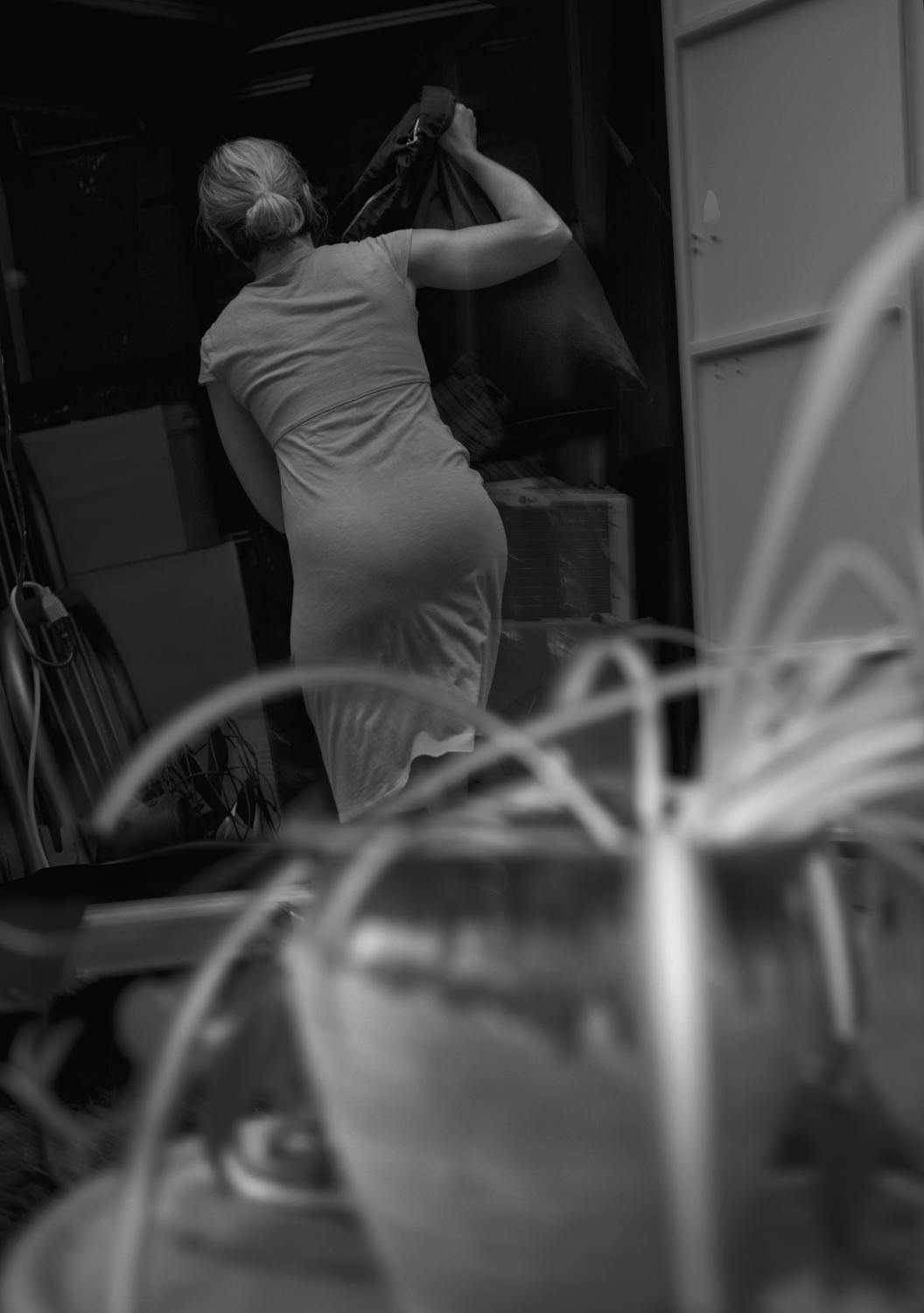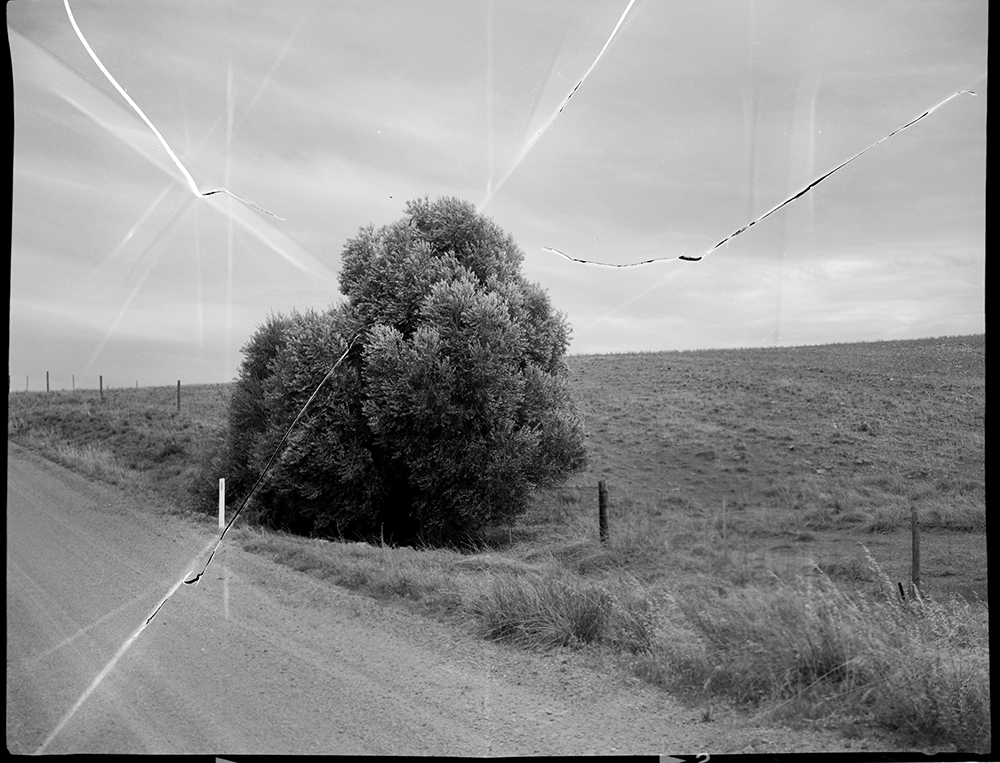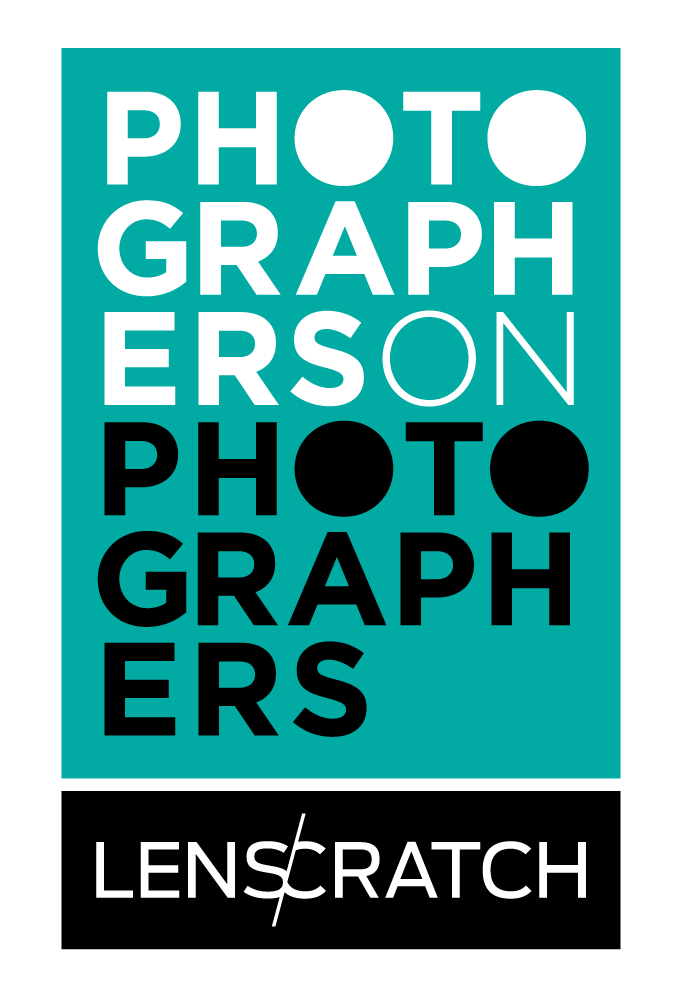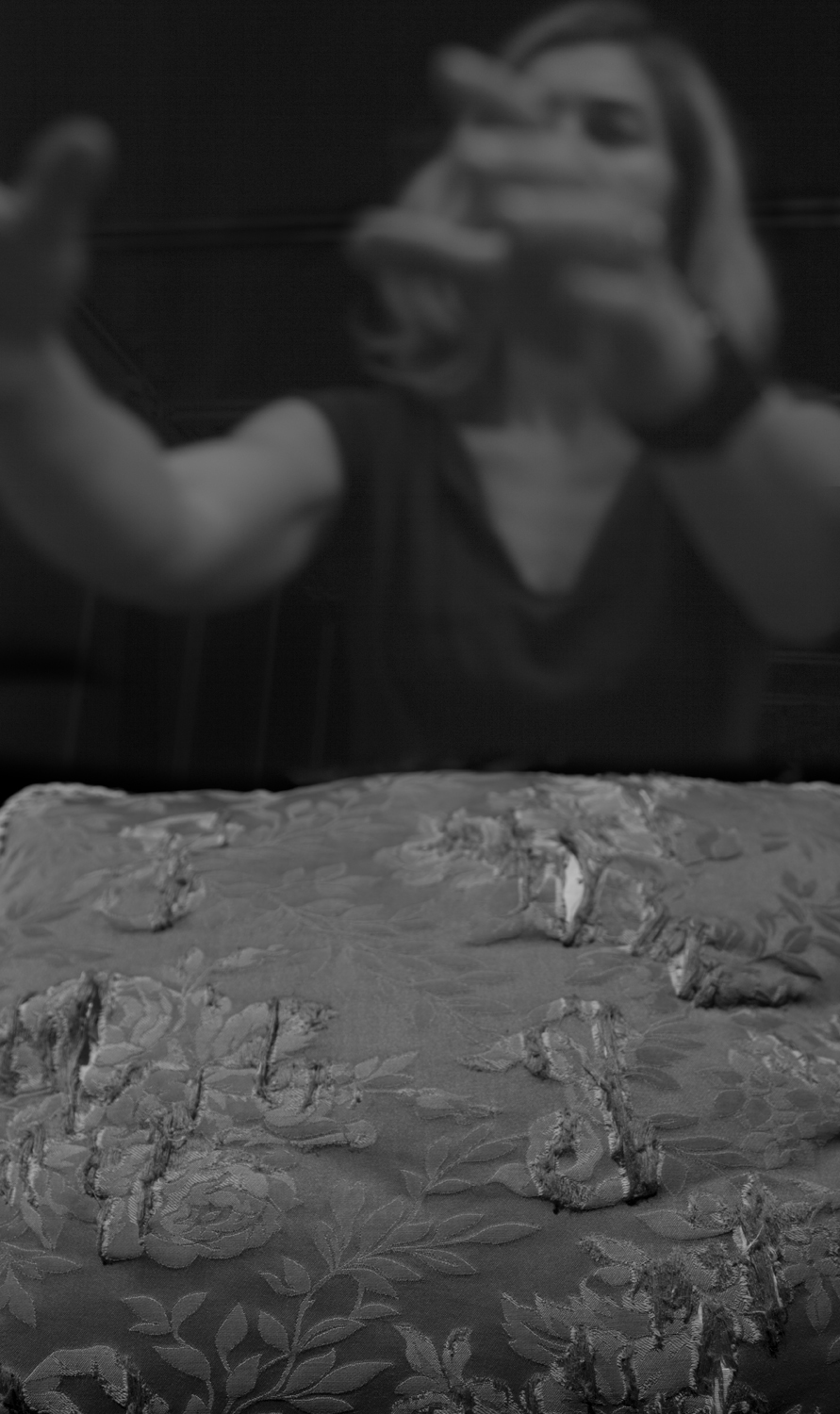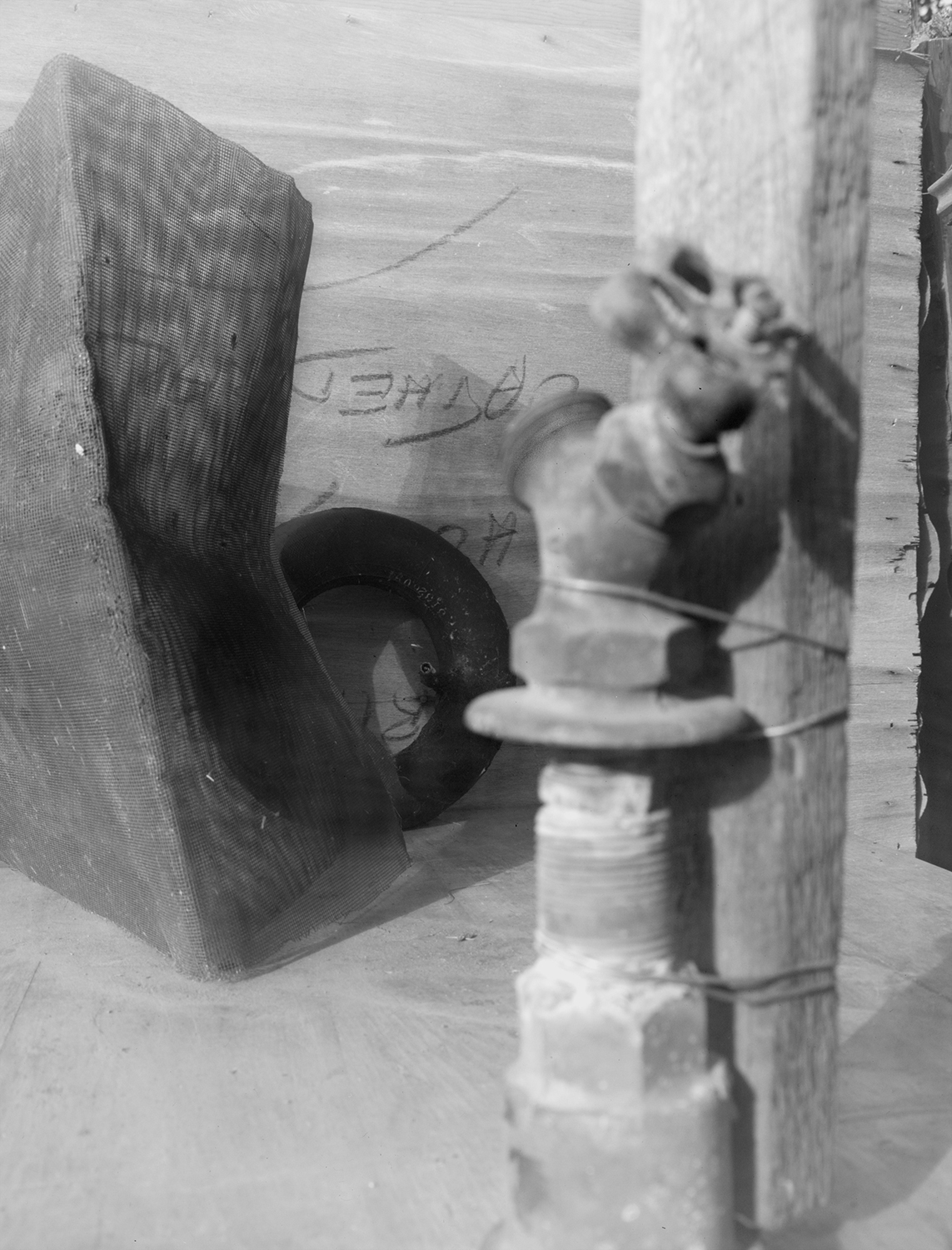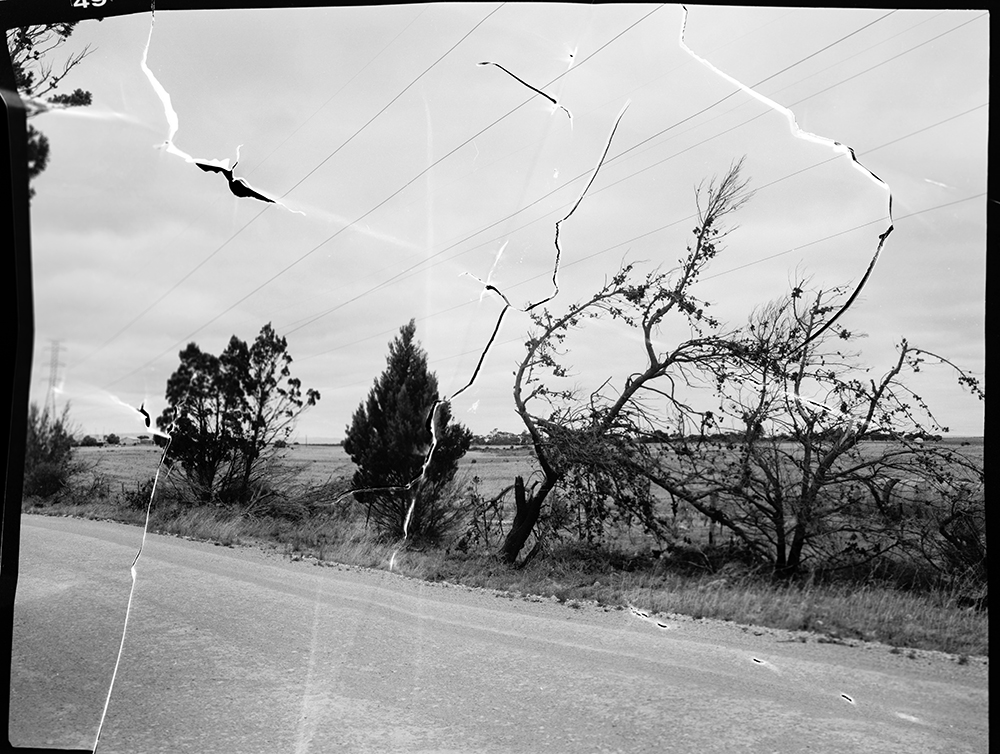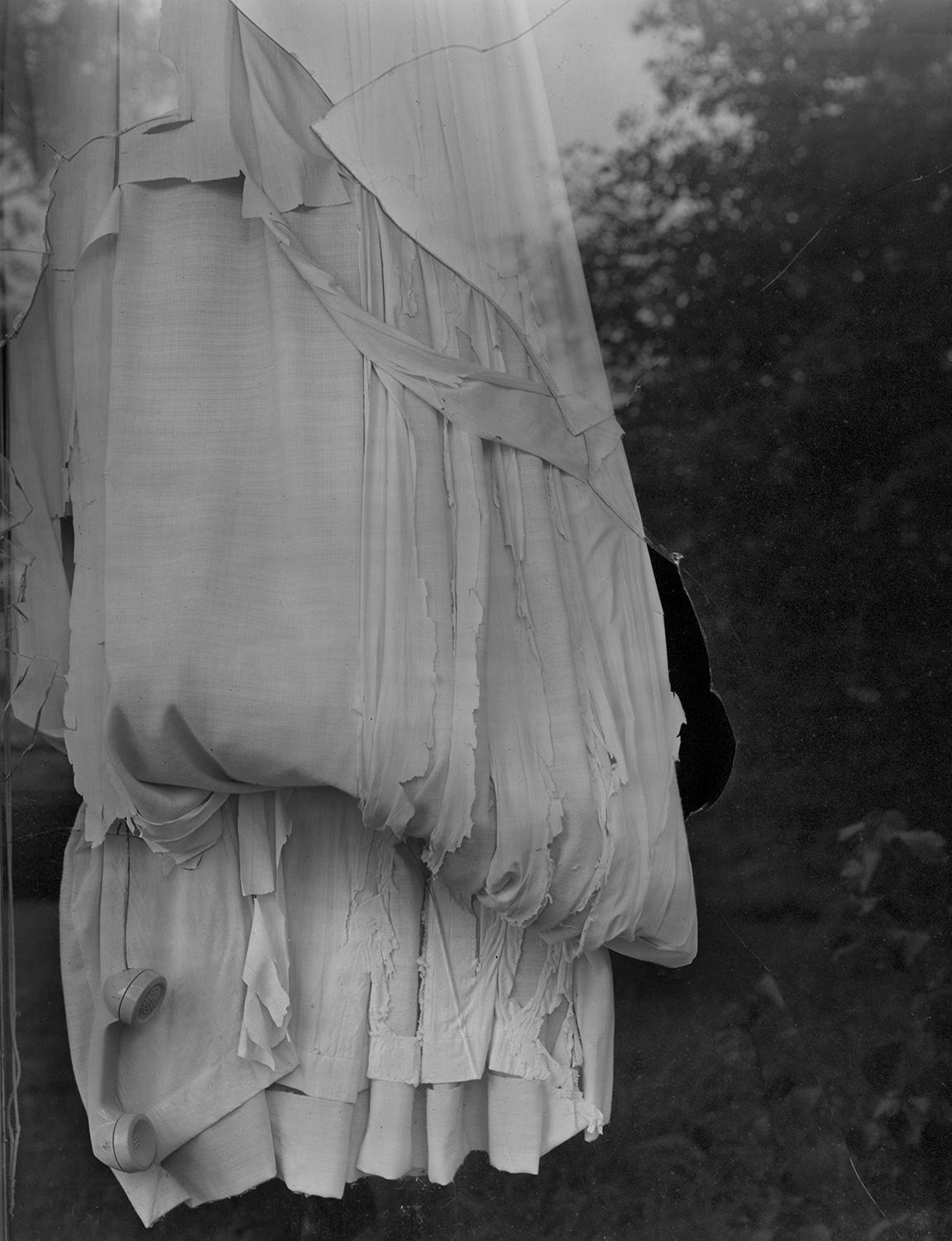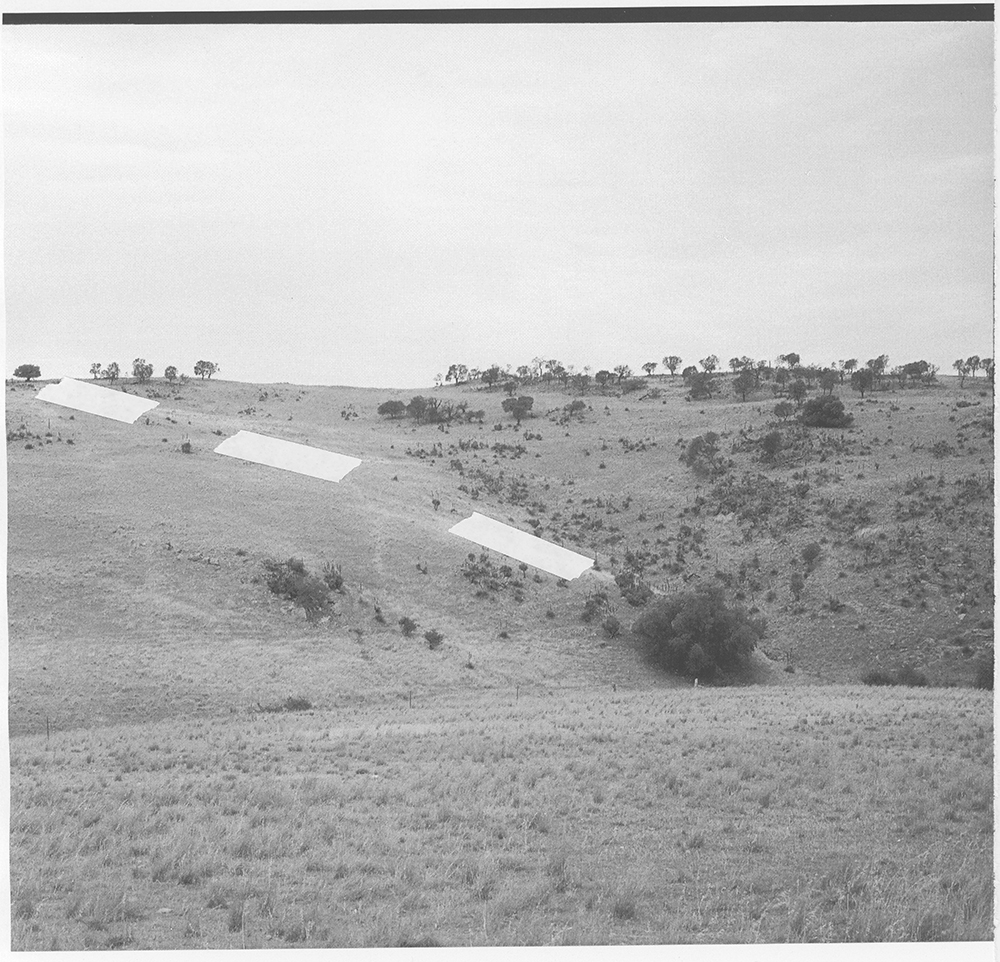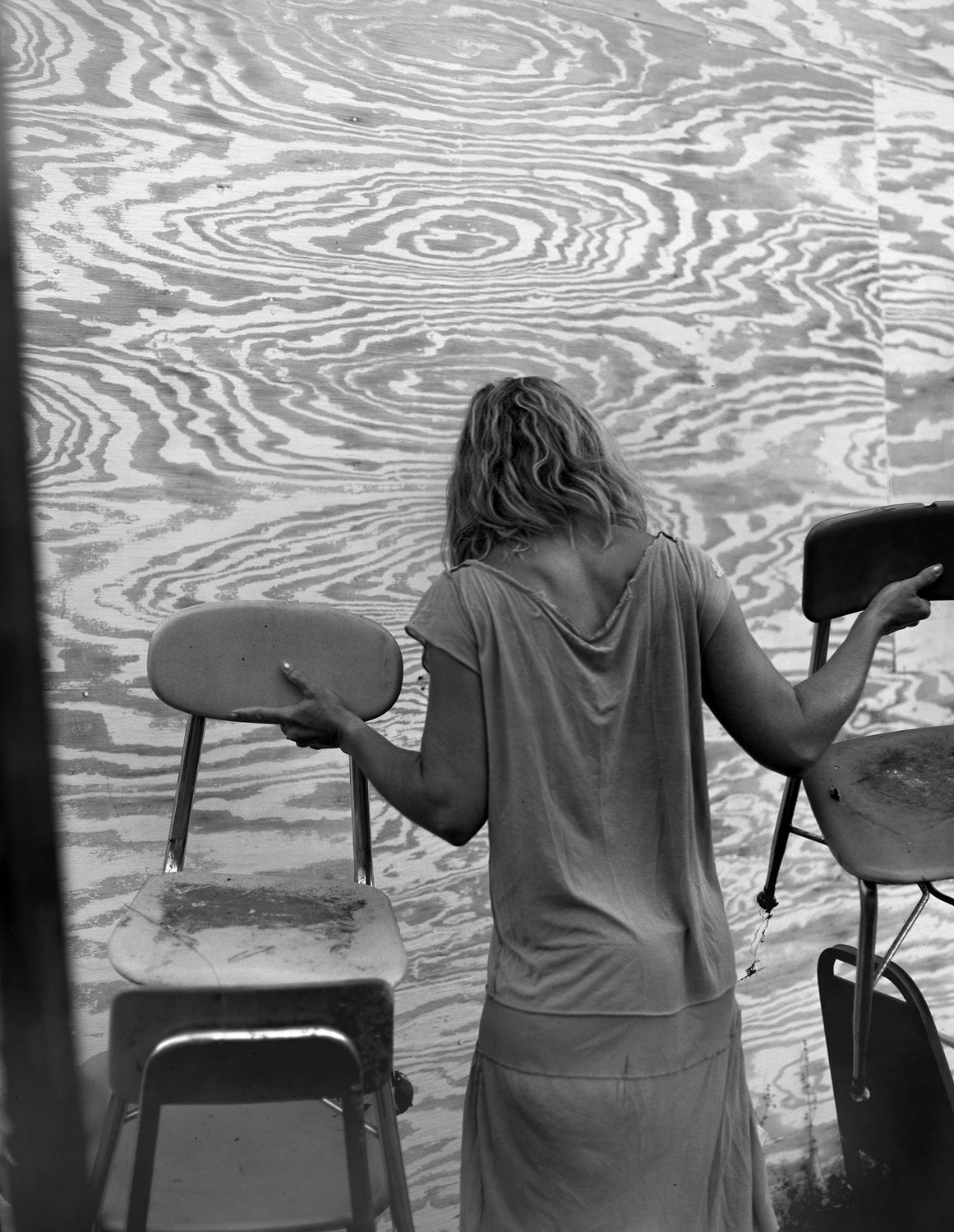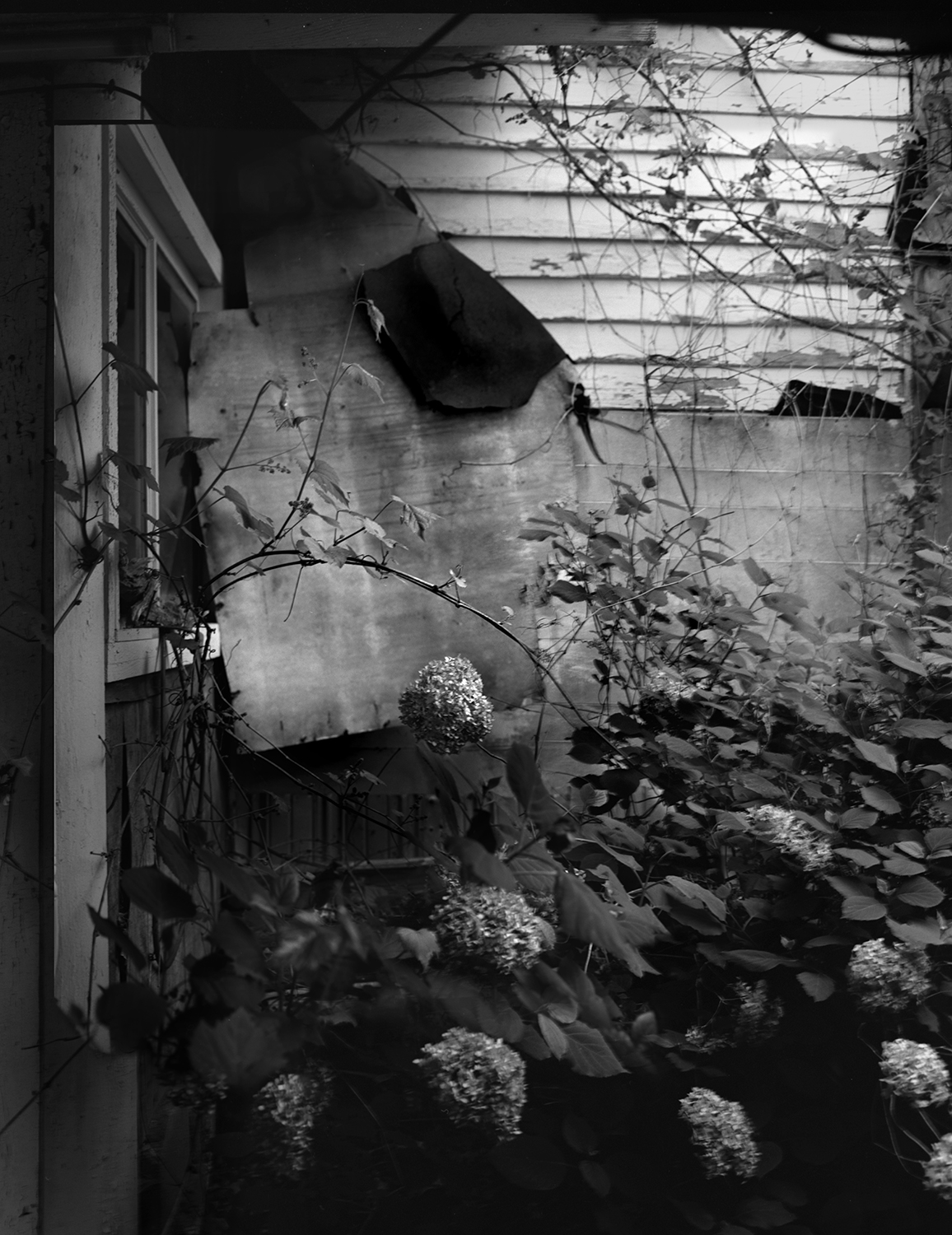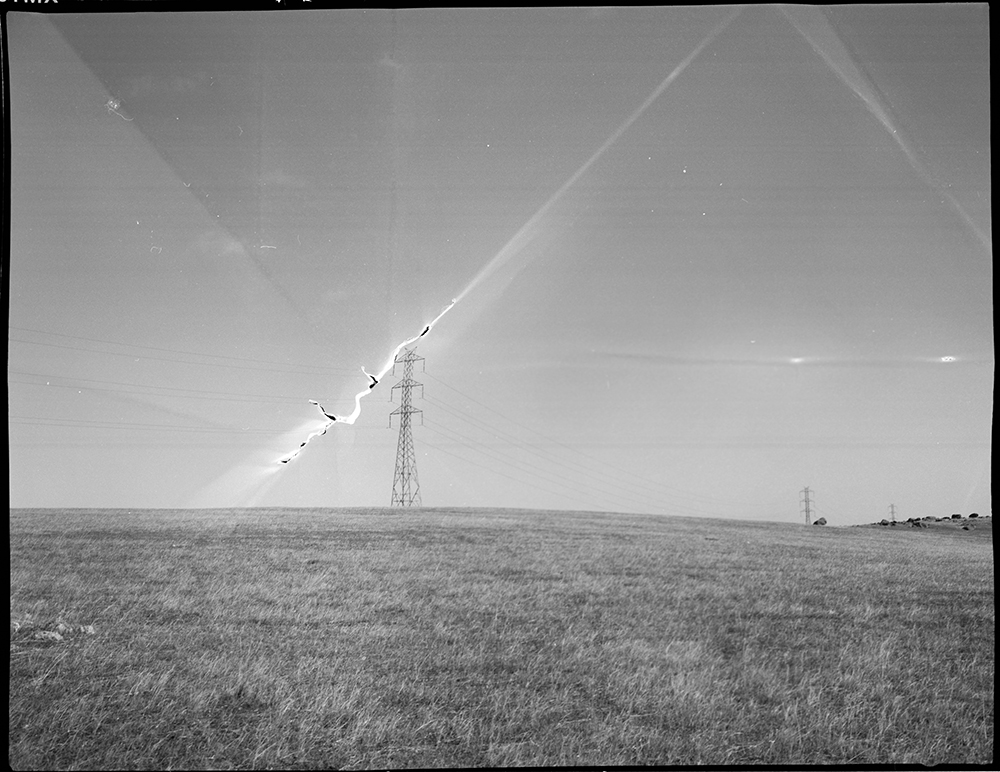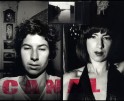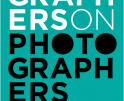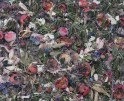Photographers on Photographers: Odette England and Raymond Meeks
Over the last two weeks, we are sharing some of our favorite Photographers on Photographers posts. Enjoy! – Aline Smithson
I chose to interview Raymond Meeks because I relish the simplicity – and complexity – of his photographs. Family, memory and place are shared subjects of interest in our respective practices. There’s a beautiful lightness of touch to Ray’s relationship with a camera that I’m in awe of. And I think of his work often, especially as I have framed his “Erasure: Halfstory Broadside” which I see every day.
Raymond Meeks (Ohio, 1963) has been recognized for his books and pictures centered on family and place. In November 2014, a mid-career retrospective of his books was organized by Light Work in Syracuse, NY. The exhibition featured more than twenty books, including self-published works and numerous volumes from a variety of publishers.
In 2011, Meeks and publisher Kevin Messina (Silas Finch) co-founded Orchard Journal, which was established as a collaborative conversation between artist, subject and viewer. Featured artists have included Wes Mill, Deborah Luster and Mark Steinmetz.
Ray is currently at work on a new set of Journals under the title Dumbsaint, to be published by TIS Books. Vol. 1, Township (Sept 2017), is in collaboration with Tim Carpenter and Adrianna Ault, guest edited and with a short story by Brad Zellar.
Meeks is a 2016 recipient of the Siskind Fellowship Grant. His book Halfstory Halflife (chose commune, 2018) was a finalist for the Paris Photo/Aperture Photobook of the Year Award.
Odette England (South Australia, 1975) received an MFA with Honors from the Rhode Island School of Design and a PhD in Art & Art History from the Australian National University. Her work has shown in more than 90 solo, two-person and group exhibitions worldwide.
England’s work has also appeared in American Photo, Photograph, The Brooklyn Rail, Photo District News, Hotshoe International, the British Journal of Photography and Australian Art Monthly, among others.
Awards England has received include the Magenta Foundation Flash Forward Emerging Photographers Award (UK winner, twice) and the CENTER $5,000 Project Launch Award. In 2015, she was shortlisted for the Australian Photobook of the Year. England is also a recipient of the HotShoe Magazine Photofusion Photography Award and The Print Center Honorary Council Award for Excellence.
Recent artist residencies include the prestigious invitation-only Robert Rauschenberg Foundation Residency, where England collaborated with photographer and friend Jennifer Garza-Cuen.
England is director of the Winter Garden Photograph project, for which she received a $5,000 grant from the Mellon Foundation. This project will culminate in her first edited volume Keeper of the Hearth. The book will launch in Spring 2020, published by Schilt Publishing, with a foreword by Charlotte Cotton.
OE: What’s your nickname, and how did it come to being?
RM: My sister, who’s all of eleven months older, began calling me “deke” at the age of two. it stuck all through high school with a few friends and family still referring to me by the nickname. Deke doesn’t pair especially well with my last name, so I didn’t give it much of a chance.
OE: A profession other than yours you’d love to try, and why?
RM: Musician. Probably a double-bass, but I also love trumpet, which is what my father played. I don’t know what could be better than to have been any of the musicians jamming with Miles Davis for the 1959 recording of “kind of blue”. I’d play a gut-bucket if it meant I could experience that form of free improvisation. I also sometimes fantasize about having a postal carrier position…. a daily walking route. A bonus to combine this with photographing the familiar neighborhoods.
OE: My daughter and I do that [photograph our neighborhood] every evening in the summer – her with a Polaroid camera, me with my Mamiya 7II.
Your most treasured possession related to photography?
RM: A Robert Adams picture, “Nebraska State Hwy 2, Box Butte County, NB” that he offered as a trade for a night sky picture I’d made, which was heavily influenced by a night sky picture he’d made a few years previous.
OE: Uncanny! Mine is a handwritten letter Bob once sent me, which includes a sketch he drew of a beautiful leafless tree from a book he recommended I read, The Artistic Anatomy of Trees by Rex Vicat Cole.
A sound or noise you love?
RM: Oddly, the sound of paper being folded and creased. No explanation. Perhaps something from a past life? And driving a back highway at night with all the windows down, the sound (and sensation) of air whipping around my head.
OE: Some of my fondest memories are standing on the back of my Dad’s beat-up utility, driving the long dirt road at dusk from our swamplands to the farm house. I can still feel the last light on my face and the smell of fresh cut lucerne hay.
Your favorite art or art-related book?
RM: A Death in the Family by James Agee. Only because it’s the book I’m currently obsessed with. Timeless and tender. As a maker and storyteller, I’m reminded of a Stephen Dunn quote that’s been pinned to a wall in my studio: “return to zero, the master said. Use what’s lying around the house. Make it simple and sad”.
OE: The trait you most deplore in yourself?
RM: It’s been a long process, but I’m learning to accept even the most deplorable of traits and reconcile with how these contribute to the beautiful objects I make. That said, I wish I cared less about what others think of me.
OE: Me too.
Is it better to give or receive?
RM: I find it easier and more fulfilling to give.
OE: What would your super power be?
RM: Invisibility.
OE: Which artist has taught you the most?
RM: My son, Adam. He’s a filmmaker.
We, as storytellers, invest so much of ourselves in researching, refining craft, time spent in the field, recording. outward projection. Less interior time, developing ourselves, our connection to place and others —being deliberate with our intentions. Cultivating curiosity and wonder. Adam understands the value in nurturing his individual humanity and making an inclusive connection with others. It’s pretty wonderful to watch him work with actors and a crew, how he has a gravity that draws people in. He keeps it real.
OE: How do you relax?
RM: Red wine, time in the elements…the woods, a river or stream, ocean, sky. Paring the two! Still trying to develop a meditation practice.
OE: Best kiss of your life?
RM: Freshmen year at Bishop Ready HS in Ohio. Diane Fawbush, who was a year younger. She ignited an otherwise latent oral fixation and passed on mononucleosis, which a doctor recently re-diagnosed and told me I’d always have as a virus, prone to flare-ups. Really dogs me at times. Zero regrets, though.
OE: That’s a wonderful story! Mine was Simon Rowe, ninth grade. We were lying on a sofa in our friend’s rec room waiting for my Mom to pick me up. We keep in touch intermittently. You’d probably like him – he went into the wine business.
Something you’d never photograph, ever…
RM: I don’t think I could make a picture of a defenseless or suffering being.
OE: What keeps you awake at night?
RM: I just stayed up most of the night to binge-watch the recent season of True Detective.
OE: Your screensaver?
RM: A picture of my son at age 13 at the top of his ascent from a trampoline with the sky above Montana as backdrop. He’s in a free-fall, all limbs, a mop of hair.
OE: Film versus digital?
RM: I still love the built-in restraint of film and a direct contact print on glossy silver gelatin paper. But I’m shooting almost exclusively digital, lately.
OE: Black & white versus color?
RM: For me, Black and White. I find color to be so seductive.
Color, in the hands of Guido Guidi, Ron Jude, Eggleston, of course.
OE: At the top of your photography bucket list is…? (invisibility!)
RM: A cruiser bike so I could marry the two extremes of walking or driving as I’m out roaming with a camera. A bike seems the perfect speed for covering square miles and careful observation.
OE: A photographer you’d love to collaborate with is…?
RM: I’ve made a practice and published a few books with fellow photographers and must say, it rarely works, without the end result (a book) feeling forced. The qualities that draw me to another photographer’s work and therefore, to suggest collaboration, don’t often serve the collective piece. An exception might be the last book I made with Tim Carpenter and my partner, Adrianna Ault—where we handed our pictures over to writer Brad Zellar and asked him to edit and sequence the work. There’s a collision that can happen between two artists and a grounding that takes place, for me, when a third or fourth collaborator enters the equation, preferably a writer or artist working in another medium.
I spend so much time in my work, alone. There’s excitement in sharing space with friends and and fellow makers under the construct of a collaborative project. And much to be gained in terms of new perspective, seeing how others work and understanding what drives them.
I haven’t given up. Awoiska van der Molen and I began a new project which is slowly evolving and exciting with possibility. I’d love to find a way to spend time and attempt something with Ron Jude. That would be a master class.
OE: Indeed.
What photography project do you wish you’d done but have yet to?
RM: I don’t tend toward working on projects, as much as stringing together pictures made over time that end up centered on a theme or loose concept. I wish for the pictures I never stopped to make due to a crying infant in the back seat or meat spoiling and ice cream melting in the trunk on my way home for the store. How is it that the world becomes charged and alive when there’s no possibility of stopping to make the picture?
OE: True. I have a catalog of images in my head that came and went. A family dressed the entirely in the same pink tracksuits riding the London Underground… A man sawing wood in his yard, almost entirely hidden by a huge plume of sawdust, at sunset, with a swarm of butterflies frolicking in the lavender nearby…
A question you’d love to answer that you’ve yet to be asked?
RM: A question formed in a way that would allow me to respond with one of my favorite quotes, one that I share with students when I get the chance.
From Kiki Smith: “Just do your work. And if the world needs your work it will come and get you. And if it doesn’t, do your work anyway. You can have fantasies about having control over the work but I know I can barely control the kitchen sink. That is the grace I’m given. Because when one can control things, one is limited to one’s own vision.
Posts on Lenscratch may not be reproduced without the permission of the Lenscratch staff and the photographer.
Recommended
-
Photographers on Photographers: Congyu Liu in Conversation with Vân-Nhi NguyễnDecember 8th, 2025
-
Photographers on Photographers: Mehrdad Mirzaie in Conversation with Liz CohenSeptember 4th, 2025
-
Photographers on Photographers: Elizabeth Hopkins in Conversation with Nicholas MuellnerAugust 21st, 2025
-
Photographers on Photographers: Cléo Sương Mai Richez in Conversation with Shala MillerAugust 20th, 2025
-
Photographers on Photographers: Emma Ressel in Conversation with Tanya MarcuseAugust 19th, 2025

